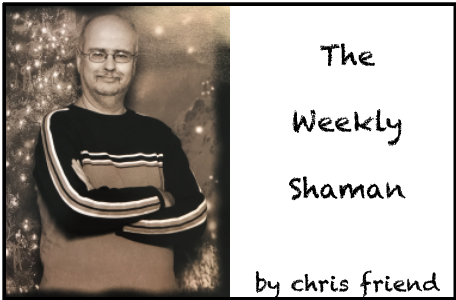Recently my sister’s Sacred Way did a discussion on hoodoo. Hoodoo should not be confused with voodoo, since voodoo is actually a religion while hoodoo is a magical folk practice. Even though hoodoo has many elements borrowed from the Haitian faith, it also borrows from European magic, as well as Native American shamanism. Voodoo is a blend of African tribal beliefs and Catholicism. Hoodoo seems to be mixed with a form of Protestant folk magic similar to that practiced by the Pennsylvania Dutch. Hoodoo is a noun likely derived from the Ewe word hudu. The word has come to mean a spell, potion, or conjurer (Male or Female). The practice incorporates the use of roots, candles, a variety of religious items, and many nature-based tools like feathers. New Orleans is the hoodoo center of the world. It should be noted that the traditional image of the voodoo doll has no real place in voodoo or hoodoo, but comes from Western European black magic. Practitioners of the Caribbean faiths would sometimes drive nails into the image of a saint to help capture the magical energies inside, likely derived from the practice of making nail effigies in West Africa. Outsiders to the religion saw it as being similar to the dolls with pins most often seen in horror films. In almost all of the Afro-Caribbean practices the crossroads were considered intersections of great magic. Because of their ambiguous nature of being four places at once, the crossroads are seen worldwide as foci of magic and supernatural activity. In voodoo, hoodoo, and Santeria ( among many other Afro- Caribbean faiths) they are ideal for the best conjuring and spell work. Direct from a crossroads is often used in a variety of spells. And on Halloween the crossroads is considered a location of great spirit activity in the African based faiths, as well as in many European countries. Obviously this is another example of cross- cultural mix between European folklore and African spiritualism. November 2nd, All Souls’ Day, s also considered The Feat of the Ancestors, again borrowed from African beliefs, French Catholicism, and Native American festivals of the Dead. On this day New Orleans Catholics attend Mass and visit the cemeteries to pray for their dead. In the fall I was haunting my usual place- the used book sale- and came upon a copy of J. Kosinzki’s The Painted Bird. I’d read numerous things on both the book and the author. One of the most bizarre stories about Kosinzki happened in August 1969. He was set to visit several of his friends in Los Angeles when his luggage was accidentally sent to Chicago. So, he was forced to divert his trip to Chicago to get his luggage. His friend was film director Roman Polanski, whose pregnant wife Sharon Tate was at home. In the night both she and her other guests were bizarrely murdered by the Manson Family Cult. Kosinzki detailed this weird mishap in his book Blind Date. He was also responsible for the novel Being There, which had plot similarities to Forrest Gump even though Kosinzki’s book came out much earlier. Anyway, back to The Painted Bird. It is likely one of the finest novels I’ve ever read. Set during World War II in a surreal fairy tale landscape, it features a young gypsy boy struggling against incredible prejudice and cruelty. This was one of the most unusual books I’ve ever read. I can’t guarantee that it will appeal to fans of science fiction, horror or fantasy, but it was so eerie I couldn’t put it down. It is a world where peasant superstitions are alive and the land is haunted by all manner of spooky characters. However, take note: it is very violent and this kid is frequently attacked and abused. Even so, it gets my highest recommendation.

